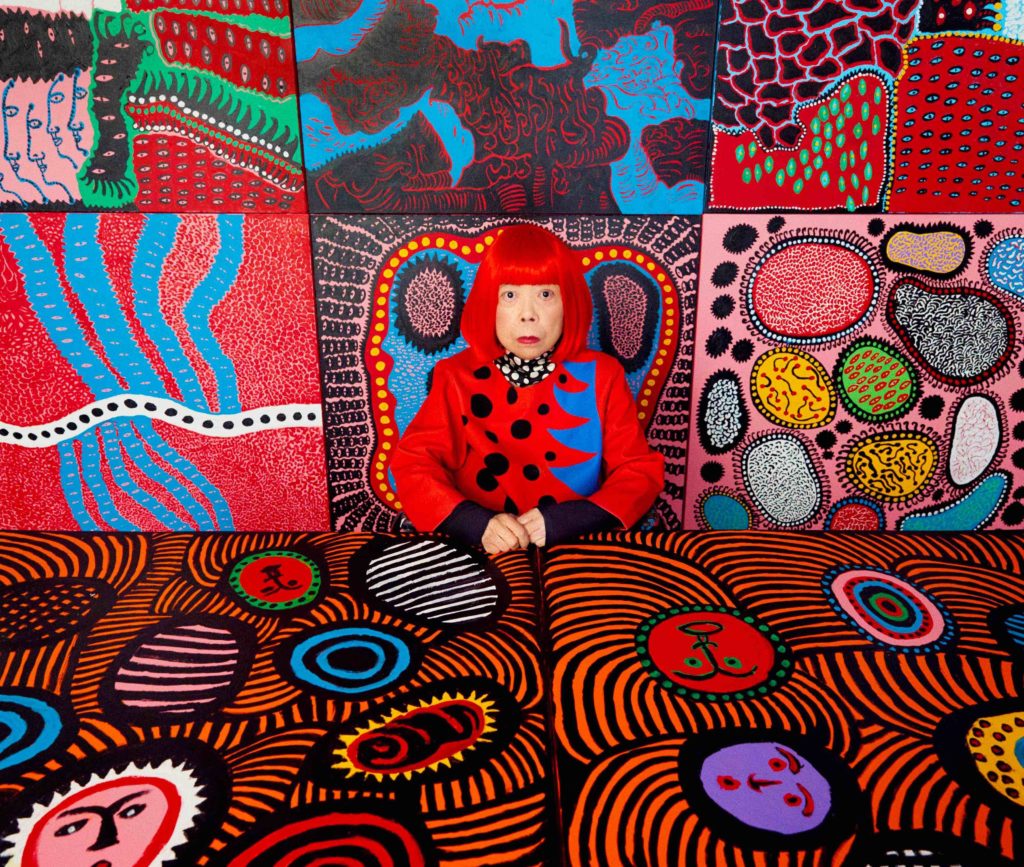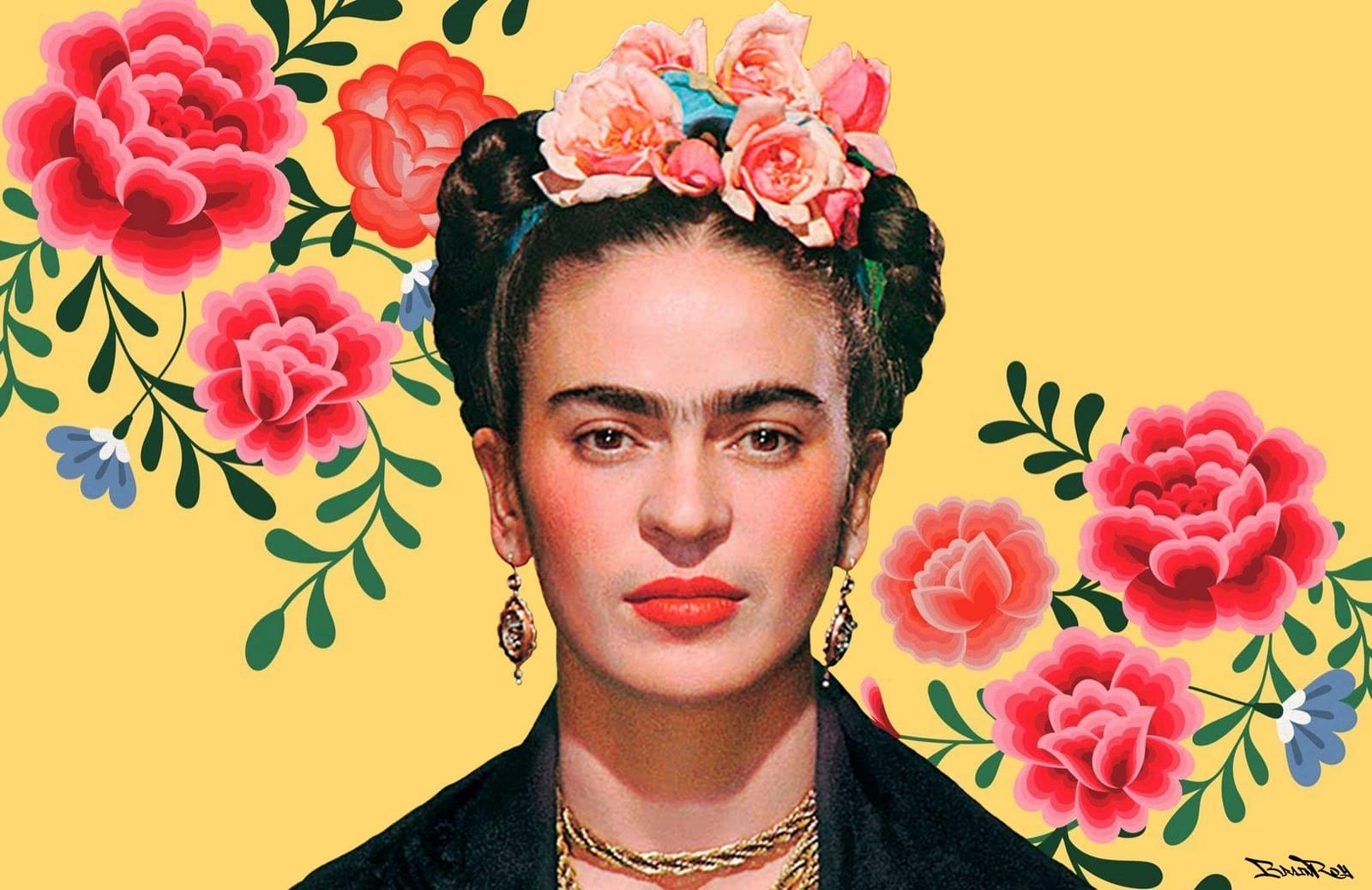
Asia has produced a wealth of influential and innovative artists, from traditional painters to avant-garde contemporary creators. These artists have helped shape global art movements, blending cultural heritage with modern themes such as identity, technology, and politics. Here’s a look at some of the most influential Asian artists, spanning various countries and artistic styles:
1. Yayoi Kusama (Japan)
- Style: Contemporary, Pop Art, Conceptual Art
- Notable for: Polka dots, infinity rooms, immersive installations
- Themes: Obsession, mental illness, infinity, sexuality
- Impact: Kusama is one of the most famous and recognizable contemporary artists in the world. Her use of polka dots and mirrors in installations like Infinity Mirror Rooms has made her a global phenomenon. Her work often explores her personal battles with mental illness, as well as broader themes of repetition, obsession, and infinity.
2. Ai Weiwei (China)
- Style: Conceptual Art, Sculpture, Installation
- Notable for: Political activism, installations like Sunflower Seeds (Tate Modern)
- Themes: Human rights, freedom of expression, Chinese government criticism
- Impact: Ai Weiwei is one of the most politically engaged artists in the world. His works are often critiques of Chinese government policies, authoritarianism, and social justice issues. His Sunflower Seeds installation at Tate Modern (millions of hand-painted porcelain seeds) and his architectural collaboration on the “Bird’s Nest” stadium for the Beijing Olympics are key examples of his influence.
3. Takashi Murakami (Japan)
- Style: Superflat, Contemporary Art, Pop Art
- Notable for: Colorful, anime-influenced art, commercial collaborations with brands like Louis Vuitton
- Themes: Consumerism, pop culture, post-war Japanese society
- Impact: Murakami is a pioneer of the Superflat movement, which blends traditional Japanese art with pop culture, anime, and consumerism. His works, like Mr. DOB and the Flower series, are internationally recognized, and he has successfully bridged the gap between fine art and commercial culture, making him a dominant figure in both contemporary art and fashion.
4. Zhang Xiaogang (China)
- Style: Contemporary Painting
- Notable for: Bloodline: Big Family series of surreal, stylized family portraits
- Themes: Collective memory, family, Chinese history, the Cultural Revolution
- Impact: Zhang Xiaogang is best known for his haunting and surreal portraits in the Bloodline series, which explore the impact of China’s Cultural Revolution on family and identity. His use of muted colors and stylized figures often creates a sense of collective memory, tapping into both personal and national trauma.
5. Nam June Paik (South Korea/USA)
- Style: Video Art, Installation, Performance Art
- Notable for: Being the pioneer of video art, works like TV Buddha and Electronic Superhighway
- Themes: Technology, communication, global culture
- Impact: Paik is considered the father of video art. His innovative use of television sets, electronic imagery, and multimedia installations has had a profound impact on contemporary art, especially in terms of integrating technology and media into the artistic process. His work often explores the intersection of culture and technology, predicting the digital age.
6. Lee Ufan (South Korea)
- Style: Minimalism, Mono-ha (Object School)
- Notable for: Minimalist paintings and sculptures, use of natural materials like stone and steel
- Themes: Time, space, nature, existence
- Impact: Lee Ufan is a leading figure of the Mono-ha movement, which emphasized the relationship between natural and industrial materials. His minimalist works are often meditative and engage with philosophical questions about existence, time, and space. His influence has been strong both in Korea and Japan, where he spent much of his career.
7. Rirkrit Tiravanija (Thailand)
- Style: Relational Aesthetics, Installation, Performance Art
- Notable for: Interactive installations, cooking and serving food as part of his art (e.g., Untitled (Free))
- Themes: Community, interaction, social relations, everyday life
- Impact: Tiravanija is a key figure in the Relational Aesthetics movement, where art is about human interaction and shared experiences. His installations often involve him cooking meals for gallery visitors, turning everyday actions into artistic gestures. His work questions traditional boundaries between the artist, the art, and the audience.
8. Cai Guo-Qiang (China)
- Style: Contemporary, Installation, Performance
- Notable for: Use of gunpowder in large-scale “explosion events” and installations
- Themes: Destruction and creation, nature, history, politics
- Impact: Cai Guo-Qiang is famous for his large-scale explosion projects and gunpowder drawings, which explore the relationship between destruction and creation. His works often draw on Chinese culture, history, and politics, but are also universally accessible, making him one of the most internationally successful contemporary Chinese artists.
9. Subodh Gupta (India)
- Style: Sculpture, Installation
- Notable for: Large-scale sculptures using everyday Indian objects like stainless steel utensils
- Themes: Globalization, migration, identity, Indian society
- Impact: Gupta is known for using everyday Indian objects, like kitchen utensils and tiffin boxes, to create large-scale sculptures and installations. His works address themes of identity, migration, and the effects of globalization on Indian culture, positioning him as one of India’s leading contemporary artists.
10. Yue Minjun (China)
- Style: Cynical Realism, Contemporary Painting
- Notable for: Paintings featuring exaggerated laughing figures, often self-portraits
- Themes: Absurdity, modern Chinese society, politics
- Impact: Yue Minjun is a key figure in the Cynical Realism movement in China. His paintings of figures with exaggerated, maniacal smiles are iconic, often reflecting a dark sense of humor about the absurdities of modern life and the political climate in China.
11. Choi Jeong-Hwa (South Korea)
- Style: Contemporary Installation Art, Sculpture
- Notable for: Large-scale installations using plastic and everyday consumer items
- Themes: Consumerism, artificiality, materialism
- Impact: Choi’s colorful installations, made from common plastic goods like balloons, toys, and kitchenware, challenge traditional concepts of art and beauty. His works often critique consumer culture and artificiality, offering playful yet thought-provoking commentary on materialism.
12. Liu Xiaodong (China)
- Style: Contemporary Painting, Realism
- Notable for: Large-scale paintings that depict ordinary people in realistic settings
- Themes: Social change, migration, ordinary life, modern China
- Impact: Liu Xiaodong is known for his social realist paintings, often depicting people from different social classes in China. His works capture moments of transition, migration, and social change, making him one of the most important contemporary Chinese painters.
13. Jitish Kallat (India)
- Style: Multimedia, Installation, Painting
- Notable for: Public installations like Public Notice 2 and mixed-media works
- Themes: History, memory, politics, urban life
- Impact: Kallat’s multimedia works often address Indian history, politics, and urban life, reflecting on contemporary issues through a lens of both local and global concerns. His installation Public Notice 2, which recreated a speech by Mahatma Gandhi using colored light, is one of his most notable works.
Honorable Mentions
- Huang Yong Ping (China): A key figure in Chinese contemporary art, known for his conceptual works and critique of traditional Chinese culture and Western colonialism.
- Imran Qureshi (Pakistan): Known for his miniature paintings that blend traditional techniques with contemporary political themes.
- Yoko Ono (Japan): A pioneering figure in Conceptual and Performance Art, known for her interactive works and peace activism.
- El Anatsui (Ghana/Nigeria): Though from Africa, his works have strong ties to global art conversations, and his sculptural pieces made of bottle caps address themes of colonialism, consumption, and cultural exchange.
- Maqbool Fida Husain (India): One of India’s most celebrated painters, known for his modernist style that blends Indian iconography with contemporary techniques.
These Asian artists have made significant contributions to both regional and global art scenes, often blending their cultural backgrounds with contemporary themes, and are recognized for their originality and influence. Their work not only shapes artistic movements but also speaks to broader global conversations about identity, politics, and society.





